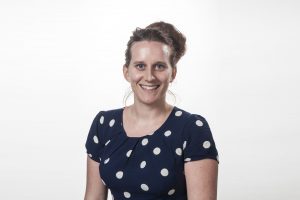Lucka Bibic

Project: Probing the hidden secrets behind G-protein Coupled Receptor Dimerization
Supervisor: Dr Leanne Stokes
Twelve thousand miles, 5 grants, ∞ cups of coffee, 4 universities, 53 written reports, 1 master thesis, four countries. No, this is not the streamlined synopsis of some Sci-Fic blockbuster hit. It is, however, a glimpse into my life before a PhD study about unravelling the hidden potentials of G-protein coupled receptor (GPCR) dimers swept me over.
However, my master degree course, taken at the Faculty of Pharmacy (University of Ljubljana, Slovenia) and later, at the Faculty of Pharmaceutical Sciences (University of Copenhagen, Denmark) first developed my curiosity in the field of analytical chemistry and pharmaceutical technology.
After some experience gained from working in the pharmaceutical industry and a placement year in Sydney (Australia), I was granted a summer placement at UEA, School of Pharmacy with Dr Lesley Howell. I thoroughly enjoyed this research project about peptide synthesis and after Dr Peter McCormick introduced me to his GPCRs, this initial interest was further propelled. I found myself eager to learn more, not only about the chemical synthesis of the peptides, but mostly on how these long stretches of amino acids can be applied in biochemical GPCRs studies.
Even if I, personally, don’t like science fiction blockbusters, my mind does love science and its infinite fictions. A BBSRC DTP studentship not only offers me a chance to join the world renowned scientific community at Norwich Research Park, but also provides the opportunity to gain a new set of skills outside of academia as part of the PIPS Scheme. Due to the support from all angles: the BBSRC administrators, DTP organizers, the UEA (School of Pharmacy) and all the other graduate students, there are plenty of opportunities to explore areas outside of science while undertaking a 3-month internship.
